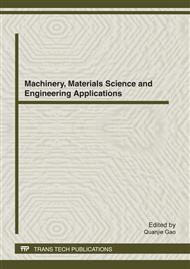p.619
p.623
p.628
p.634
p.639
p.645
p.650
p.655
p.660
Polymer Micro Hot Embossing with Bulk Metallic Glass Mold Insert
Abstract:
Polymer microstructures are used more and more in many fields. Hot embossing is one of molding processing to achieve micro polymer components. In this paper, bulk metallic glass was selected as mold material to fabricate mold insert of micro hot embossing. Traditional UV-lithography and ICP-etching were used to achieve micro features on silicon wafer. And then, micro features were transferred from silicon wafer to bulk metallic glass mold insert above its glass transition temperature. Finally, applied bulk metallic glass mold insert to replicate polymer microstructure with hot embossing. Three commonly used thermoplastic polymers: high-density polyethylene (HDPE), polypropylene (PP) and polycarbonate (PC) were selected in this study. Experiments show that microstructures can have a good replication from bulk metallic glass mold insert to the thermoplastic polymer using hot embossing.
Info:
Periodical:
Pages:
639-644
Citation:
Online since:
April 2012
Authors:
Price:
Сopyright:
© 2012 Trans Tech Publications Ltd. All Rights Reserved
Share:
Citation:


